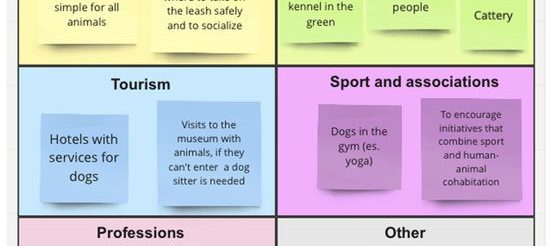Sustainability | Free Full-Text | Between Participatory Approaches and Politics, Promoting Social Innovation in Smart Cities: Building a Hum–Animal Smart City in Lucca

In recent decades, the interest in social innovation and nature-based solutions has spread in scientific articles, and they are increasingly deployed for cities’ strategic planning. In this scenario, participatory approaches become pivotal to engaging the population and stakeholders in the decision-making process. In this paper, we reflect on the first year’s results and the strengths and weaknesses—of the participatory activities realized in Lucca to co-design and co-deploy a smart city based on human–animal relationships in the framework of the European project Horizon 2020 (IN-HABIT). Human–animal bonds, as nature-based solutions, are scientifically and practically underestimated. Data were collected on the activities organized to implement a public–private–people partnership in co-designing infrastructural solutions (so-called Animal Lines) and soft nature-based solutions to be implemented in the city. Stakeholders actively engaged in mutual discussions with great enthusiasm, and the emergent ideas (the need to improve people’s knowledge of animals and develop a map showing pet-friendly services and places and the need for integration to create innovative pet services) were copious and different while showing many connections among the various points of view. At the same time, a deeper reflection on the relationships among the participatory activities and institutionally integrated arrangements also emerged.
